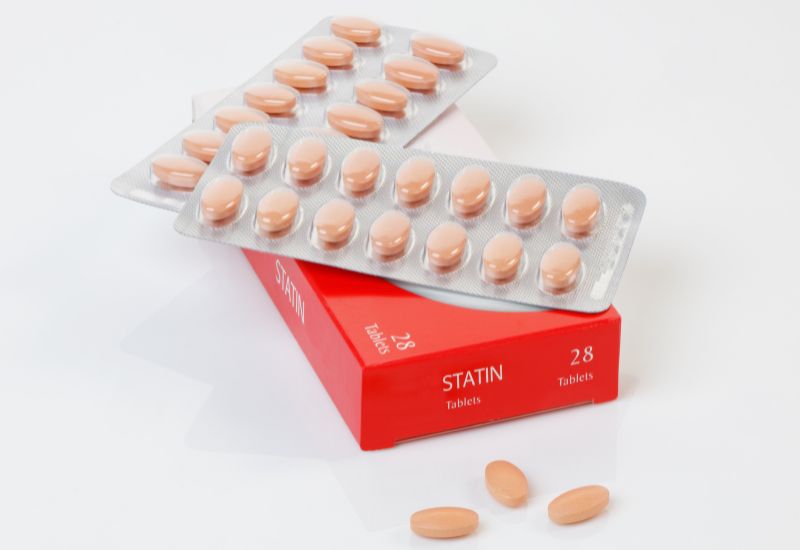As healthcare communicators have struggled to combat statin misinformation with traditional debunking strategies, our study reveals how “pre-bunking” can be much more effective.
The context: While statins – the most popular class of cholesterol-reducing drugs – are a proven means to lower cardiovascular risk, only 35% of those eligible are using them, mainly because of widespread misinformation on social media.
Indeed, our analysis of 8,156 original tweets shared in the last six months found that 76% of the debate consisted of misleading statements alleging statins are dangerous and prescribed for profit.
The top misinformation driver, apart from general allegations of a Big Pharma conspiracy, was that statins exacerbate cardiovascular issues, increasing the risk of heart failure and coronary artery calcification, contrary to their intended purpose of reducing heart disease.
The fastest emerging misinformation drivers were rooted in concerns about common side effects. For example, muscle pain was portrayed as an indicator of deeper harm. There was also evidence of a growing misconception that statins directly cause diabetes, despite their only minor potential to increase blood sugar levels.
Apart from leading to otherwise preventable health problems, this spread of misinformation significantly erodes pharma’s reputation, as it villainises statin producers like Pfizer, Merck, AstraZeneca, Teva and Dr. Reddy’s Laboratories.
The problem: debunking doesn’t work
Ever since the pandemic, the traditional way to fight viral medical misinformation has been to debunk it – an approach that has proven largely ineffective.
This is because debunking usually addresses only the surface-level facts without engaging with the deeper emotions, values and trust issues that underlie people’s beliefs.
Against this backdrop, more and more medical professionals are advocating for a pre-bunking approach – anticipating and countering misinformation before it spreads – aligning with the industry’s broader shift towards proactive healthcare models.
Some medical influencers like Johns Hopkins researcher Jessica Malaty River, known to the public for her Instagram presence, are already employing AI to track public sentiment and inform her proactive communications. When it comes to statin misinformation in particular, studies have already suggested the benefits of such a pre-bunking approach.
But for pre-bunking to be effective, healthcare communicators should go beyond traditional blanket educational campaigns and leverage actionable social media insights to inform tailored engagement.
How Commetric can help
Our human-enriched social media analytics solutions delve deep into different user segments based on their behaviours and motivations, which can be targeted with tailored pre-bunking approaches.
For example, we identified several types of users who share statin misinformation and who require different engagement strategies:
- Hardcore conspiracy theorists: The most prolific group of users link statins to broad conspiracies, claiming that pharma suppresses negative information and often tying statins to larger narratives of mistrust in Big Pharma.
Engagement strategy: Presenting facts and data, a common tactic among pharma communicators, is ineffective with hardcore conspiracy theorists who believe pharma skews such information. Emotional patient success stories that resonate on a personal level stand a better chance of engaging and potentially swaying this audience.
- Natural remedy advocates: This group promotes natural or alternative remedies over statins, often citing natural substances or diets as superior and safer for managing cholesterol.
Engagement strategy: Target this segment with content that acknowledges the benefits of holistic and natural approaches to health while providing evidence-based comparisons showing how statins can complement these methods in managing cholesterol effectively.
- Side effect questioners: These users focus on the side effects and potential risks of statins, questioning their efficacy and safety, and often sharing personal anecdotes or articles that highlight negative experiences with statin use.
Engagement strategy: Address this group’s concerns by sharing patient testimonials and data on statins’ efficacy and safety, ensuring communications include balanced discussions on potential side effects and how they are managed in clinical practice.
- Informed sceptics: Individuals who engage in more nuanced discussions, sharing research and asking questions about statins’ effects on other conditions like diabetes.
Engagement strategy: Offer in-depth, research-backed information and facilitate Q&A sessions with healthcare professionals to engage this segment, providing nuanced explanations and addressing the complexities of statin use and its benefits versus risks.
- Health and wellness enthusiasts: Users in this category often discuss statins in the context of broader health and wellness conversations, comparing them to lifestyle changes, diet and exercise, evaluating their role in a holistic approach to health.
Engagement strategy: Connect with this audience by highlighting how statins can be part of a comprehensive health and wellness plan, emphasising the role of medication in conjunction with diet, exercise and lifestyle choices for optimal cardiovascular health.

